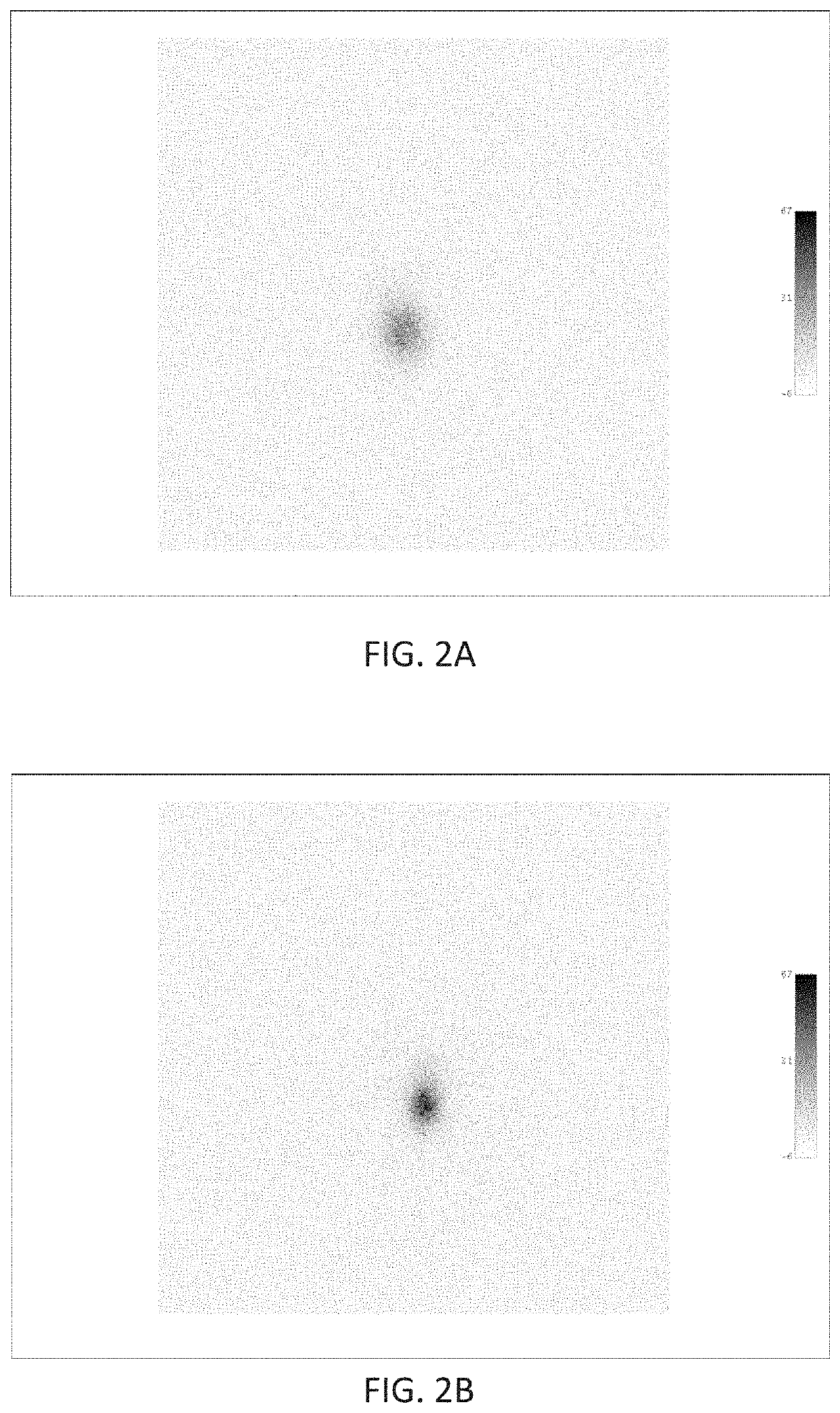Compositions, devices and kits for selective internal radiation therapy
a technology of selective internal radiation therapy and compositions, applied in the field of radiation therapy, can solve the problems of most common and survival-limiting problems of patients with dcis treatment after breast conserving surgery, the uncertainty of the effect and the inability to meet the tolerance of normal tissue, so as to reduce the chance of local recurrence and assess the effectiveness and safety of radioactivity-based ablation of surgical margins.
- Summary
- Abstract
- Description
- Claims
- Application Information
AI Technical Summary
Benefits of technology
Problems solved by technology
Method used
Image
Examples
example 1
cal Study
[0187]In one example, a homogeneous distribution of 90Y-labelled particles is demonstrated in a set of experiments using 90Y microspheres mixed with a hydrogel or tissue glue. By solidifying during the injection or implantation process, the radioactive glue or gel can be distributed uniformly, and it can resist undesired effects from gravity, dispersion or leakage into the blood or lymph vessels, hematomas, etc. FIGS. 2A and 2B depict gamma camera views of 1mCi (37 MBq) of 90Y microspheres in BIOGLUE®, which is a mixture of 45% wt / vol bovine serum albumin and 10% wt / vol glutaraldehyde, in a 4:1 ratio in a 2.5 mL syringe cylinder. Additional studies were performed using 5 mL plastic spheres which were filled with 90Y microspheres and a gel carrier or matrix material, such as BIOGLUE, COSEAL (PEG / HCl / NaPhos / NaCO3; Baxter Healthcare, Hayward, Calif.) or BERIPLAST (fibrinogen / thrombin; CSL Behring GmbH; Marburg, German), at activity levels in the range of 370 to 740 MBq, filled...
example 2
y
[0198]In one study, an animal model of pancreatic cancer applicant used with human MIA-Paca-2 RFP cells in the thigh of CD1 nude mice to then apply the new matrix, which will act as a carrier for the 90Y spheres, in the site of the induced tumor. Intra-tumoral application of the new matrix with 90Y spheres led to increased levels of the compound in the tissues through its homogeneous distribution and made it possible to achieve effective doses for the treatment of the tumor by reducing the rate of spreading and avoiding and minimizing the systemic side effects of therapy.
[0199]The experimental protocol involved a locoregional treatment affecting tumor shrinkage with tangible benefits for the host. The results obtained from this and other studies herein can be translated into clinical practice, introducing significant benefits, as in the majority of cases pancreatic cancer is inoperable for locally advanced disease.
[0200]The radioisotope and matrix used for this study were the SIR-S...
example 3
jector Development
[0210]Due to the different densities and viscosities of the two solutions forming a hemostatic gel, sealant or hydrogel, one solution may flow into the catheter in greater quantity than the other, whereby the following problems may occur:[0211]compound wastage;[0212]difficulty applying the compound on account of the considerable force the operator has to apply to the syringe with both hands;[0213]misapplication of the compound due to dislodgement of the end portion of the catheter because the operator is unable to use just one hand to hold said catheter in place during infusion; such dislodgement requires the operator to use a greater quantity of the compound in order to be sure that it has reached and covered the entire the target volume.
[0214]Moreover, the reduced flow rate of either of the two compounds facilitates activation of the compound near the end portion of the catheter where mixing takes place to activate the compound, i.e., near the outlet of the two s...
PUM
 Login to View More
Login to View More Abstract
Description
Claims
Application Information
 Login to View More
Login to View More - R&D
- Intellectual Property
- Life Sciences
- Materials
- Tech Scout
- Unparalleled Data Quality
- Higher Quality Content
- 60% Fewer Hallucinations
Browse by: Latest US Patents, China's latest patents, Technical Efficacy Thesaurus, Application Domain, Technology Topic, Popular Technical Reports.
© 2025 PatSnap. All rights reserved.Legal|Privacy policy|Modern Slavery Act Transparency Statement|Sitemap|About US| Contact US: help@patsnap.com



